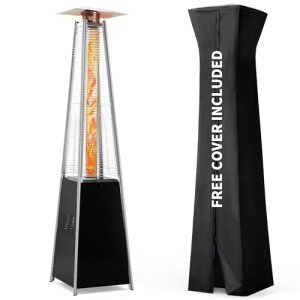Best Value Fireplaces: An In-Depth Guide
The fireplace has long been regarded as the heart of a home, offering heat, atmosphere, and a centerpiece for celebrations. However, navigating through different alternatives can be overwhelming, specifically with budget restrictions in mind. This article provides an informative guide on the best value fireplaces, detailing their types, features, and benefits to assist house owners make a sensible choice.
Types of Fireplaces
Fireplaces can be found in a variety of designs and types, each with various qualities, expenses, and benefits. Here's a comprehensive appearance at the most common types of fireplaces offered in the market today.
| Type of Fireplace | Description | Average Cost | Pros | Cons |
|---|---|---|---|---|
| Wood-Burning | Burn logs to develop heat and ambiance. | ₤ 1,500 - ₤ 5,000 | Genuine experience, natural heat | Needs routine upkeep, less efficient |
| Gas Fireplaces | Utilizes gas or propane to produce heat. | ₤ 2,000 - ₤ 5,000 | Easy to use, cleaner than wood | Limited to gas supply, installation expenses |
| Electric Fireplaces | Simulates flames with LED technology and produces heat via electricity. | ₤ 200 - ₤ 3,000 | Easy setup, installation versatility | Less genuine feel, higher operating costs |
| Pellet Stoves | Usage compressed wood or biomass pellets, supplying an environment-friendly choice. | ₤ 3,000 - ₤ 4,500 | Efficient, low emissions | Requirements electrical power to operate, needs storage for pellets |
| Ethanol Fireplaces | Burns ethanol fuel, producing flames that do not need a chimney. | ₤ 300 - ₤ 2,500 | No vents required, portable | Higher fuel expense, security concerns |
Factors to Consider When Choosing a Fireplace
Picking the ideal fireplace is not practically looks; it also includes practical considerations. Here are vital factors to bear in mind:
1. Budget
- Determine how much you want to spend. Keep in Traditional Fireplaces USA that installation and upkeep costs can accumulate.
2. Area and Size
- Guarantee the fireplace fits well within the room, thinking about both the space available and the heating requirements.
3. Fuel Type
- Choose the fuel source based upon accessibility, cost, and the type of atmosphere you want to accomplish.
4. Efficiency
- Choose systems with high-efficiency ratings to guarantee you are getting the most value for your cash in terms of heat output.
5. Visual Appeal
- Pick a style and design that complements existing decoration and boosts the general beauty of the space.
6. Regulations
- Understand local policies, permits, and building regulations that may affect your fireplace installation.
Top Best Value Fireplaces
Based upon client evaluations, specialist opinions, and overall value for money, here are a few of the best value fireplaces presently readily available in the market:
1. DuraVent Pellet Stove
- Type: Pellet
- Average Cost: ₤ 2,000
- Highlights: Highly efficient with low emissions, making it an excellent option for environmentally-conscious property owners.
2. Napoleon B36NTR-1
- Type: Gas
- Typical Cost: ₤ 2,500
- Emphasizes: This fireplace is aesthetically attractive and extremely efficient, with a streamlined style and adjustable flame.
3. Duraflame Electric Heater Stove
- Type: Electric
- Typical Cost: ₤ 200
- Highlights: Affordable and portable, perfect for smaller areas or adding ambiance to a room without permanent setup.
4. Genuine Flame Juliet Gel Fireplace
- Type: Ethanol
- Typical Cost: ₤ 300
- Emphasizes: A stylish choice for modern areas that requires no venting, making it flexible and simple to install.
5. Vogelzang VG5790
- Type: Wood-Burning
- Typical Cost: ₤ 800
- Emphasizes: Offers a traditional wood-burning experience with a sleek modern design, best for those who cherish the timeless ambiance.
Often Asked Questions (FAQs)
Q1: What is the most economical fireplace option?
A1: Electric fireplaces tend to be the most cost-efficient in terms of preliminary purchase price and installation, however can have higher operating costs compared to gas or pellet units.
Q2: Are gas fireplaces safer than wood-burning fireplaces?
A2: Yes, gas fireplaces usually produce less emissions and pose a lower danger of chimney fires as they do not produce creosote like wood-burning systems.
Q3: Can I install a fireplace myself?
A3: While some electric fireplaces enable easy self-installation, other types, particularly gas and wood-burning models, usually need professional setup due to venting and safety issues.
Q4: How do I preserve my fireplace?
A4: Regular upkeep includes cleaning up the chimney (for wood-burning fireplaces), examining for gas leaks (in gas units), and making sure proper ventilation for electric designs.
Q5: Is an ethanol fireplace a good choice?
A5: Ethanol fireplaces are appealing for their modern style and ease of installation. However, they can be less efficient and more expensive to operate long-lasting compared to other fuel types.
Choosing a value fireplace that meets your visual preferences and useful requirements involves thorough research study and consideration. By comprehending various types of fireplaces, their associated expenses, and advantages, homeowners can make educated decisions that will not just fit their spending plan however likewise boost the warm and inviting atmosphere of their homes. Whether choosing an electric, gas, wood-burning, pellet, or ethanol design, the ideal fireplace awaits to transform your home.

